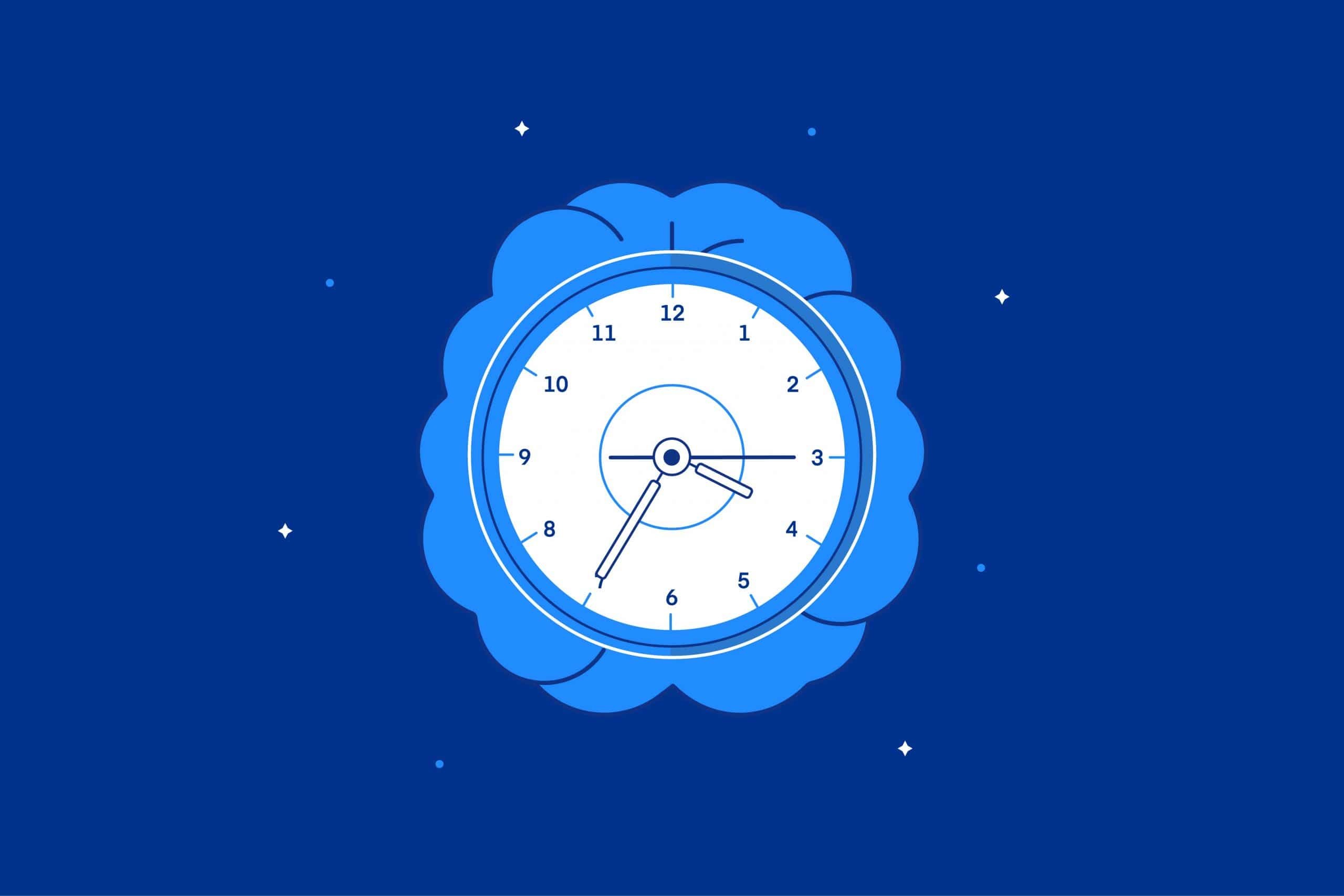We have all heard the age-old saying: ‘Wake up early if you want to be successful.’ Yet some people naturally wake up at sunrise, while others find their focus only close to evening. The difference is not willpower, but biology.
Every person has their own chronotype: a natural clock in the body called circadian rhythm, which guides us to wake up or signals us to sleep. Your chronotype also determines when you are most active and when you are ready to wind down your day.
In this blog, we will help you understand your chronotype and how, with a few simple changes, you can feel more energised without pushing yourself harder.
Understanding your chronotype:
Most of us casually describe ourselves as “morning people,” “night owls,” or “somewhere in between.”
To explain this in more detail, Dr Michael Breus, a clinical psychologist and sleep expert, described chronotypes through four animals in his book ‘Power of When’.
Each animal reflects a different pattern of sleep and energy:
1. Lion (the early riser)
- Wake up naturally around sunrise.
- Best focus and energy in the morning.
- Prefer to complete important work before lunch.
- Energy fades in the evening, and they prefer quiet nights and early sleep.
2. Bear (the day-timer)
- Around half the population falls here.
- Their energy follows the sun: mornings are steady, afternoons are active, and evenings are for winding down.
- Bear types are comfortable with regular routines and “typical” work hours.
- Bears usually feel best when they live “with the day.”
3. Wolf (the night type)
- Mornings feel heavy and slow.
- Their energy rises later in the day, often strongest in late afternoon and evening.
- They enjoy late-night work or socialising, but this can clash with early work schedules.
- Many Wolves describe feeling guilty for being “lazy” in the morning, but in truth, their body clock simply runs later
4. Dolphin (the light sleeper)
- Sleeps lightly and often wakes up tired.
- They may take time to fall asleep, wake easily at night, and feel scattered during the day.
- Energy is best mid-morning, with small bursts of energy later in the day.
- They are alert but restless, always “on guard” like the animal they are named after.
Why knowing your chronotype matters
Imagine asking a crocodile to climb a tree or an owl to sing at sunrise. It wouldn’t work, not because they’re lazy, but because it’s not in their nature. The same goes for us.
Pushing against your body clock is like walking against the wind – it leaves you feeling exhausted.
Once you understand your chronotype, you can figure out when your energy naturally peaks and use it to your advantage.
Note: Apart from this four-animal model, there are also questionnaires like the Morningness-Eveningness Questionnaire (MEQ) and the Munich Chronotype Questionnaire (MCTQ). Doctors may also look at biological signs, such as melatonin release, to map your body clock.
How to boost your energy
Now that you know why your body behaves the way it does, the real trick is learning to work with your rhythm.
1. Morning is not for everyone
If you’re a Lion, mornings are your power hours. Schedule important meetings, study, or decision-making early, because your focus fades by evening. But not everyone is built this way. Identify your type to make the best use of your day.
2. Eat with your clock
Meal timing has a direct link to energy and sleep. Research also shows irregular eating patterns can disrupt your metabolism.
- Lions: Eat a wholesome breakfast, keep dinner lighter.
- Bears: Stick to steady meal times as your body loves routine.
- Wolves: You may not need a heavy breakfast. Instead, focus on afternoon meals and avoid caffeine after 2 pm.
- Dolphins: Smaller but frequent meals will keep you stable.
3. Move when your body wants to
Exercise is a natural energiser, but the “best” time differs for everyone, and movement does not always mean a heavy workout.
A small stretch after long screen hours, walking after meals, or doing 15 minutes of yoga can reset your energy.
The idea is to move when your body feels light, not when a clock tells you to.
If you’re struggling to stay consistent, try guided routines like Online Yoga Classes in Pune, which you can follow from your home.
Wolves and Dolphins can follow evening sessions, while Lions may enjoy starting with early morning classes.
And, online yoga classes for women can help them recharge without disrupting their home and workplace balance.
Conclusion
Your chronotype is your body’s natural guide, showing when to rise, rest, and give your best. Working with it, rather than ignoring it, makes life much easier.
But many wonder if they can change their routine, like waking up early. And the answer is yes, but only with time.
Small steps like sleeping a bit earlier, eating at fixed times, or adding movement like yoga can slowly adjust your rhythm. What doesn’t work is expecting an overnight change.
Try including yoga in your routine, and if you’re looking for guided support, there are easily accessible options for online yoga classes in Pune. Also, Online Yoga Classes for Women can help them take care of their bodies while they manage multiple roles.
And remember, do not copy a routine – build your own by listening to your body and your chronotype.





